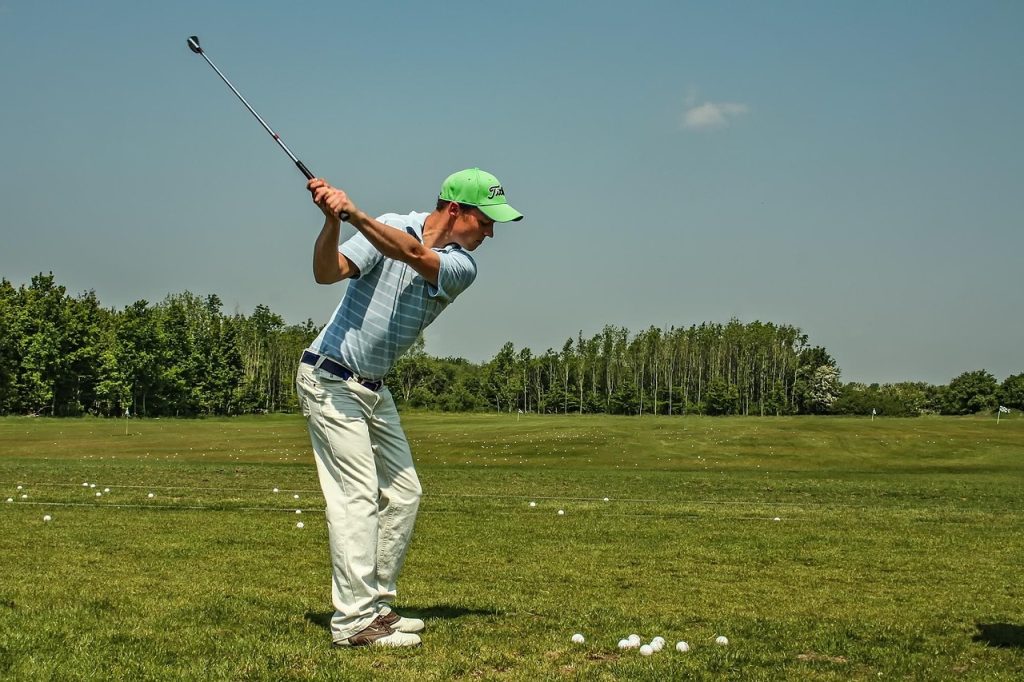In golf, there is often a significant gap between what players feel in their swing and what is actually happening (real). This concept, known as “Feel vs Real,” is a critical aspect of improving your golf game. Many golfers believe they are making a certain movement, only to see something completely different when watching a video or receiving professional feedback.
Understanding the difference between feel vs real in golf can help you refine your mechanics, improve your consistency, and lower your scores. In this guide, we will explore how your perception can mislead you, how to bridge the gap between feel and reality, and how to use this concept to improve your game.
Table of Contents
- Understanding Feel vs Real in Golf
- Why Golfers Misinterpret Their Swing
- The Role of Video and Data in Identifying Real vs Feel
- Feel vs Real Golf Swing Mechanics
- Feel vs Real Golf Training: How to Bridge the Gap
- Practical Feel vs Real Golf Drills
- Feel vs Real Golf Practice: Making Adjustments
- Common Misconceptions in Feel vs Real Golf Instruction
- Feel vs Real in Short Game and Putting
- Feel vs Real Golf Coaching: How Pros Teach It
- Feel vs Real Golf Techniques for Better Ball Striking
- Feel vs Real Golf Mindset: Training Your Brain
- Feel vs Real Golf Awareness: Becoming a More Self-Aware Player
- Feel vs Real Golf Tempo, Timing, and Rhythm
- Final Thoughts and Key Takeaways
Understanding Feel vs Real in Golf
Every golfer has felt like they were making a perfect swing, only to see the ball veer far off target. This happens because our perception of our movement does not always match reality.
- Feel refers to how a movement or action feels in your body.
- Real is the actual motion that takes place, as captured on video or measured by swing analysis tools.
This disconnect is why many golfers struggle with consistency, accuracy, and overall performance.
Why Golfers Misinterpret Their Swing
There are several reasons why golfers believe they are making the correct motion but aren’t:
- Sensory Misinterpretation – Your brain may register a movement differently than it is actually happening.
- Compensations and Bad Habits – Years of swinging incorrectly create a sense of “normal” that may not be fundamentally sound.
- Lack of Feedback – Without video or professional feedback, it’s easy to misjudge how your swing actually looks.
The Role of Video and Data in Identifying Real vs Feel
The best way to eliminate the gap between feel and real is by using video analysis or swing data.
Ways to Track Your Real Swing:
- Video Recording – Use your phone or a launch monitor to record your swing from multiple angles.
- Launch Monitors – Devices like TrackMan and FlightScope provide data on club path, angle of attack, and swing speed.
- Lesson with a Pro – A coach can identify flaws in your swing that you may not feel yourself.
Feel vs Real Golf Swing Mechanics
Your golf swing mechanics are often different from what you perceive. Some common examples include:
- Feeling like you have a full backswing when in reality, it’s only halfway back.
- Thinking you’re shifting your weight properly, but actually staying too centered.
- Believing your hands are in a neutral position, but they’re actually too far forward or back.
Feel vs Real Golf Training: How to Bridge the Gap
To improve, you must train your body to match your perception with reality. Here’s how:
- Use a Mirror – Practice your swing in front of a mirror to visually confirm positions.
- Slow-Motion Drills – Work on your swing at half-speed to build muscle memory.
- Instant Feedback Drills – Use alignment sticks or training aids to correct common mistakes.
Practical Feel vs Real Golf Drills
Here are some drills that will help you correct feel vs real inconsistencies:
- Mirror Drill – Swing in front of a mirror to match feel with reality.
- Pause at Key Positions – Stop your swing at different points to verify correct positioning.
- Video Feedback – Record and analyze every practice session.
Feel vs Real Golf Practice: Making Adjustments
When practicing, follow these steps to ensure your feel matches real:
- Record your swing at the beginning of the session.
- Identify one key discrepancy.
- Perform drills that focus on that correction.
- Record your swing again to see the improvement.
Common Misconceptions in Feel vs Real Golf Instruction
Many golfers believe they are doing things correctly, but common misconceptions include:
- “I have a perfect backswing” (but actually, it’s too short or off-plane).
- I make solid contact” (but actually, the clubface is open or closed).
- “I’m shifting my weight” (but actually, you’re staying on your back foot).
Feel vs Real in Short Game and Putting
Short game is where feel vs real matters the most:
- You may feel like you are hitting a soft chip, but you’re actually decelerating too much.
- Your putting stroke may feel straight, but it actually has a slight arc.
Feel vs Real Golf Coaching: How Pros Teach It
Professional coaches emphasize video analysis, drills, and mental awareness to help golfers improve their feel vs real connection.
Final Thoughts and Key Takeaways
- The feel vs real gap is one of the biggest challenges in golf.
- Video analysis, data tracking, and professional feedback are key to improving.
- Practice deliberately with drills that help you match feel with reality.
- The best golfers train their perception to match what is actually happening.
By understanding feel vs real in golf, you can make smarter adjustments and achieve better consistency in your game.
